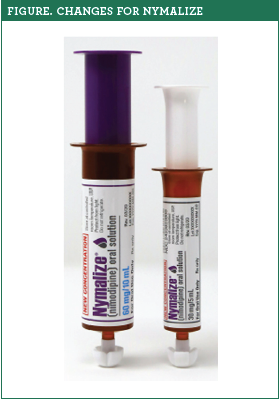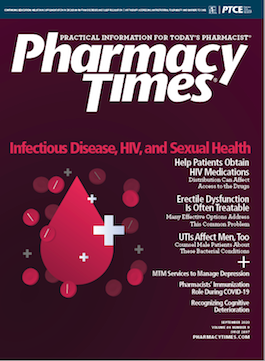Publication
Article
Pharmacy Times
Nymalize Changes Formulation and Packaging
Author(s):
Modifications may present challenges when treating pediatric patients or patients with ENFit feeding tubes.
A recent change to the formulation and new unit dose packaging of Nymalize (nimodipine) oral solution may present new challenges when treating patients with ENFit feeding tubes or in the pediatric population.
The drug, used to reduce the incidence and severity of ischemic deficits in adult patients with subarachnoid hemorrhage, is only administered enterally. It is also used off-label in children for the prevention of cerebral vasospasm after intracranial aneurysm rupture or after cerebral trauma.1 Nymalize is the only commercially available nimodipine oral solution.
ERRORS WITH GEL CAPSULES
The Institute for Safe Medication Practices (ISMP) has been a proponent of the oral solution since it was first marketed. Prior to Nymalize, only liquid-filled gel capsules of nimodipine were available. Errors sometimes occurred when the drug was withdrawn from the liquid-filled gel capsules with a parenteral syringe and needle to facilitate administration of the liquid orally or through a feeding tube—because, instead, the withdrawn drug was sometimes accidentally administered intravenously. Intravenous (IV) injection can lead to fatalities, as noted in the case below2:
A woman admitted to a hospital after a subarachnoid hemorrhage was placed on oral nimodipine 60 mg every 4 hours. Because of the disease process, she had a nasogastric tube (NG) inserted. However, the admission orders did not reflect this, and the pharmacy was not aware that the drug was being given via the NG tube. A few days later, the liquid content was withdrawn from the capsule with a syringe and needle and inadvertently administered through the patient's central IV line. Unfortunately, the patient died.
Recently, the manufacturer, Arbor Pharmaceuticals, announced several changes for Nymalize. First, the company has changed the concentration from 3 mg per mL to 6 mg per mL to require less volume per dose. Second, the product will now be available only in prefilled oral syringes of 30 mg per 5 mL or 60 mg per 10 mL (figure). The product will no longer be marketed in 10- or 20-mL unit dose cups or a 473 mL (pint) bottle.

One concern with the new packaging is how the drug will be administered to patients with feeding tubes who may not be able to swallow. Not all feeding tubes will easily accommodate an oral syringe. Also, some hospitals have converted to ENFit tubing, which is not compatible with oral syringes. Only ENFit syringes connect to ENFit tubing, but Nymalize is not available in an ENFit syringe. Also, the Global Enteral Device Supplier Association has announced that member manufacturers will begin phasing out the manufacturing of legacy feeding tubes, administration sets, and transition adapters over the next year. For the moment, Nymalize oral syringes may need to be repackaged for compatibility with ENFit.
Pediatric use of the oral syringe in the new syringe sizes is also of concern. For children, the drug requires weight-based dosing at 1 mg per kg every 4 hours.1 Given the 30- or 60-mg oral syringe sizes and lack of the previously available 473 mL (pint) bottles, only portions of the oral syringe will be needed to prepare and administer a dose. For example, a 10-kg child might need 10 mg for each dose or 1.67 mL of the 6 mg per mL solution. Given the risk of severe adverse effects from dosing errors, storage of syringes in automated dispensing cabinets and preparation on nursing units is strongly discouraged. Instead, patient-specific doses for children should be prepared in the pharmacy by withdrawing the dose from the newly available oral syringes.1
CONCLUSION
The ISMP has discussed the situation with Arbor and the FDA. The company said that it is working on both short- and long-term solutions for hospitals that use ENFit. For example, Arbor is in the process of testing an adapter for the oral syringe that will potentially be a short-term solution to the compatibility issue. Provided that study results are positive, the company said that it will be able to offer customers the new adapter in the near future at no additional cost.
Michael J. Gaunt, PharmD, is a medication safety analyst and the editor of ISMP Medication Safety Alert! Community/Ambulatory Care newsletter at the Institute for Safe Medication Practices in Horsham, Pennsylvania.
REFERENCES
- Heffren J, McIntosh AM, Reiter PD. Nimodipine for the prevention of cerebral vasospasm after subarachnoid hemorrhage in 12 children. Pediatr Neurol. 2015;52(3):356-360. doi:10.1016/j.pediatrneurol.2014.11.003
- Institute for Safe Medication Practices. Death from IV nimodipine. ISMP Medication Safety Alert! Acute Care. 2013;18(4):1-2.







